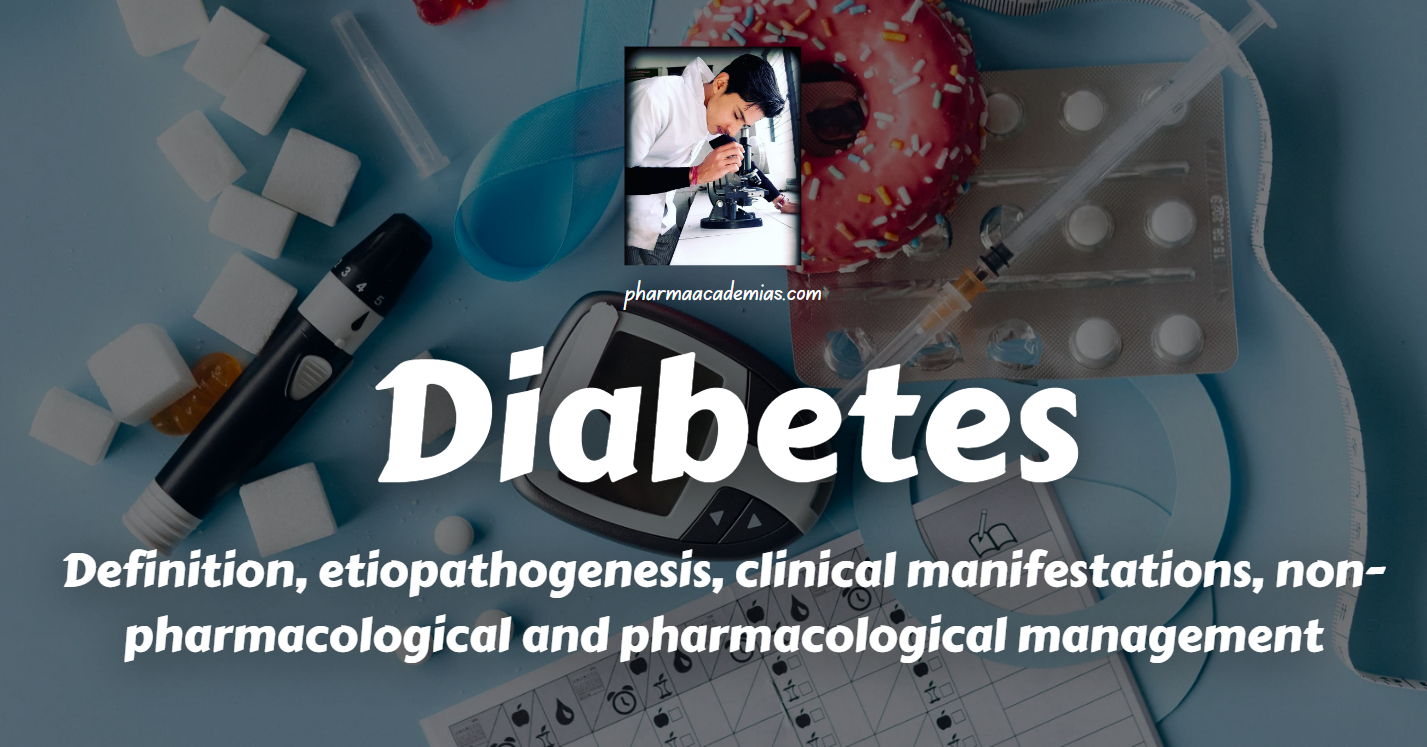Definition:
Diabetes mellitus is a chronic metabolic disorder characterized by elevated blood glucose levels (hyperglycemia) resulting from defects in insulin secretion, insulin action, or both. There are different types of diabetes, with the most common being Type 1 and Type 2 diabetes.
Etiopathogenesis:
1. Type 1 Diabetes:
Autoimmune Destruction: The immune system mistakenly attacks and destroys insulin-producing beta cells in the pancreas.
Genetic Predisposition: Genetic factors play a role in susceptibility to autoimmune destruction.
2. Type 2 Diabetes:
Insulin Resistance: Cells do not respond effectively to insulin, leading to reduced glucose uptake.
Beta Cell Dysfunction: Insulin production may decrease over time.
Genetic and Environmental Factors: Family history, obesity, physical inactivity, and aging contribute.
3. Gestational Diabetes:
Occurs during pregnancy due to hormonal changes leading to insulin resistance.
Clinical Manifestations:
1. Polyuria: Increased urination.
2. Polydipsia: Excessive thirst.
3. Polyphagia: Increased hunger.
4. Weight Loss: Despite increased appetite (common in Type 1 diabetes).
5. Fatigue: Due to inefficient use of glucose for energy.
6. Blurred Vision: High blood sugar levels can affect the lens of the eye.
7. Slow Wound Healing: Impaired immune response and blood circulation.
8. Recurrent Infections: Increased susceptibility to infections.
Non-Pharmacological Management:
1. Lifestyle Modifications:
Dietary Changes: Emphasis on a balanced diet with controlled carbohydrate intake.
Regular Physical Activity: Exercise helps improve insulin sensitivity.
Weight Management: Especially for those with Type 2 diabetes.
2. Blood Glucose Monitoring:
Regular monitoring using glucometers to track blood sugar levels.
3. Education and Support:
Patient education on diabetes self-management, including proper diet, exercise, and medication adherence.
Support from healthcare professionals and support groups.
Pharmacological Management:
1. Insulin Therapy:
Type 1 Diabetes: Requires insulin from the time of diagnosis.
Type 2 Diabetes: May require insulin at various stages of the disease.
2. Oral Antidiabetic Medications:
Metformin: Improves insulin sensitivity and reduces glucose production in the liver.
Sulfonylureas, Meglitinides: Stimulate insulin release.
DPP-4 Inhibitors, GLP-1 Agonists: Enhance insulin secretion and reduce glucagon production.
3. SGLT-2 Inhibitors and Other Medications:
SGLT-2 Inhibitors: Reduce glucose reabsorption in the kidneys.
Thiazolidinediones (TZDs): Improve insulin sensitivity.
Alpha-Glucosidase Inhibitors: Slow carbohydrate absorption.
4. Combination Therapies:
Different classes of medications may be combined to achieve optimal blood glucose control.
Management of diabetes aims to achieve target blood glucose levels, prevent complications, and improve overall quality of life. Individualized care plans, regular monitoring, and ongoing patient education are essential components of diabetes management.


1 thought on “Diabetes Mellitus: Definition, etiopathogenesis, clinical manifestations, non-pharmacological and pharmacological management”